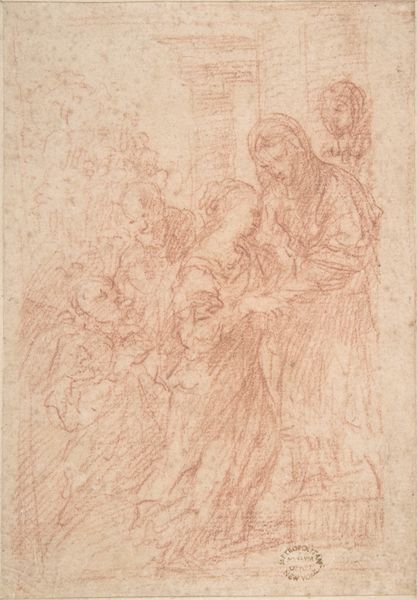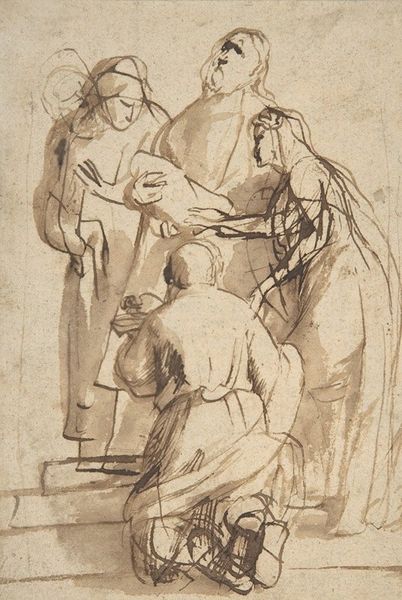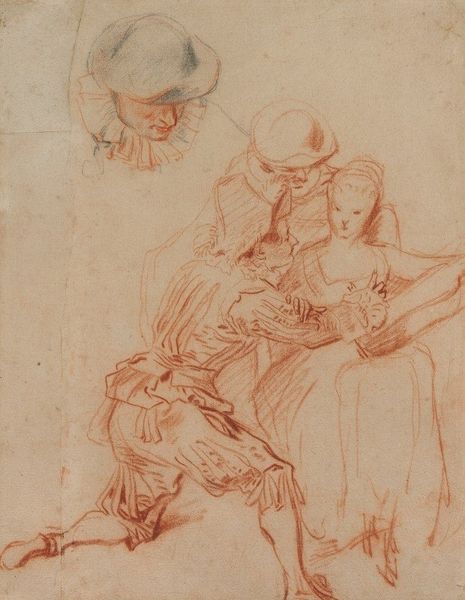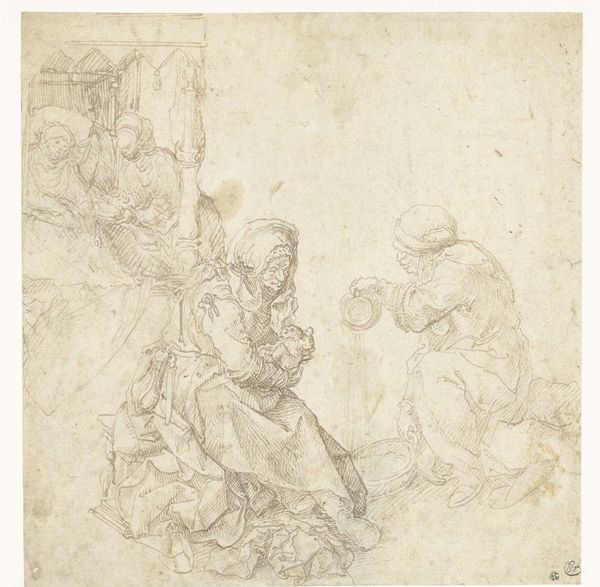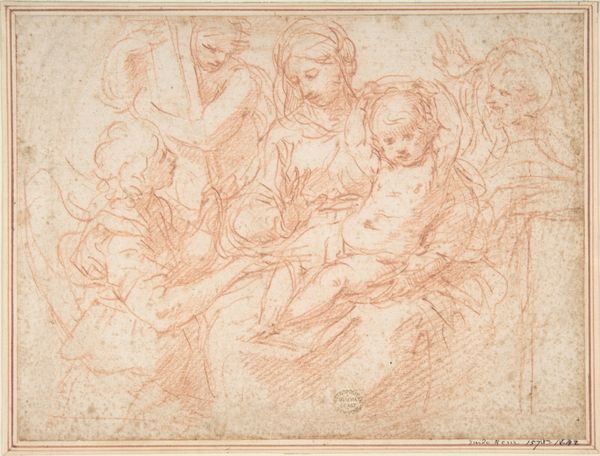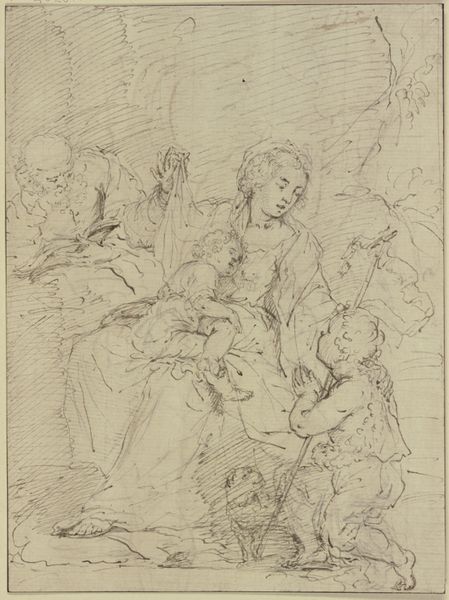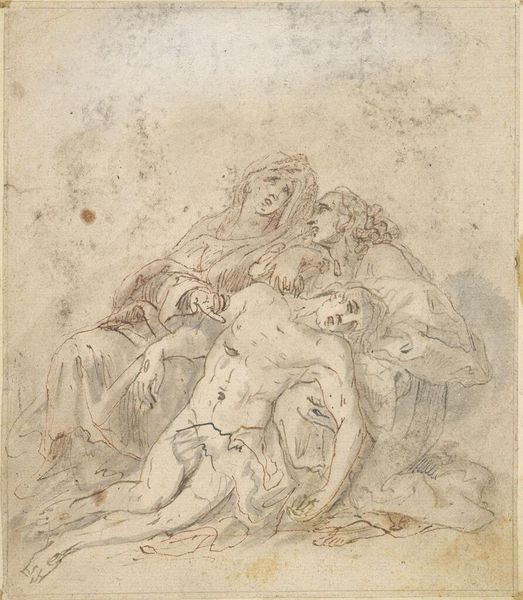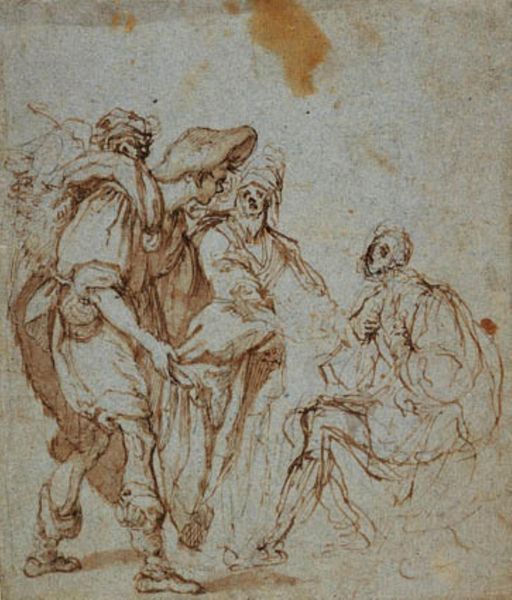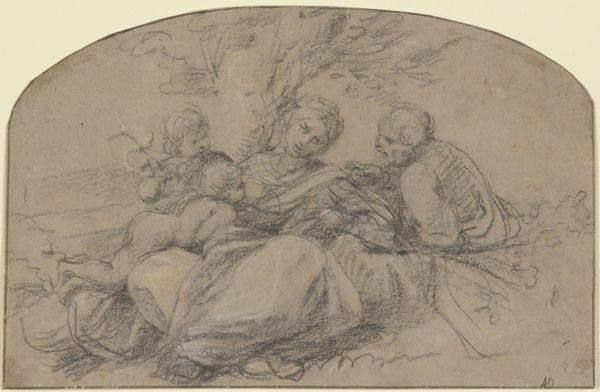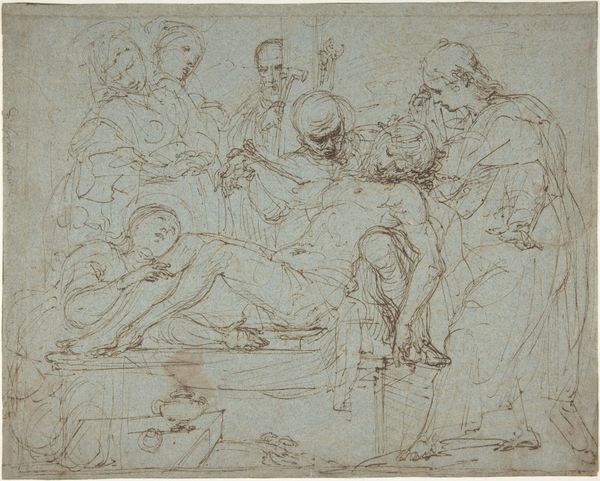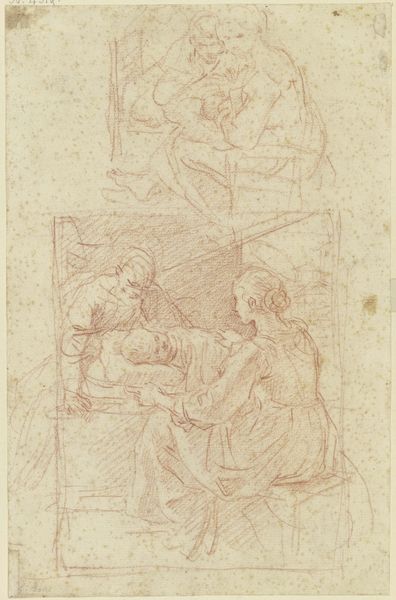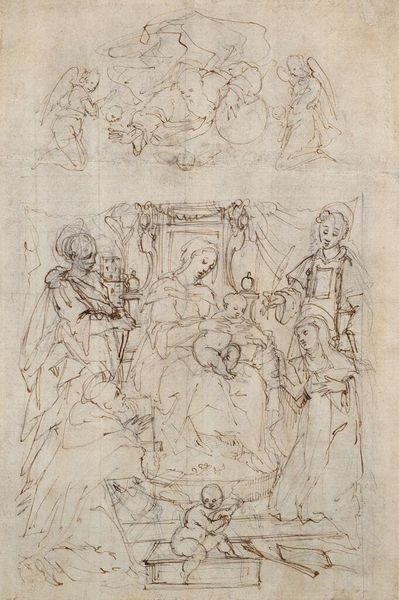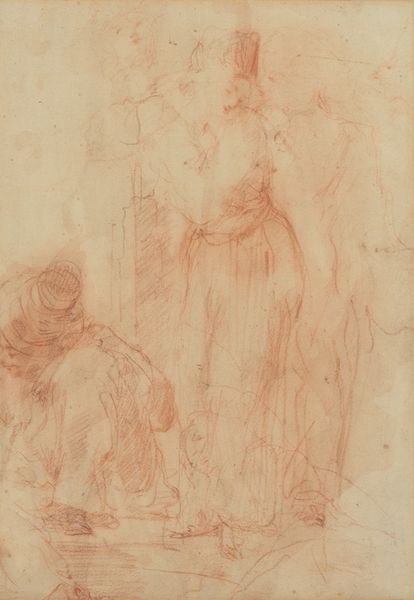
Madonna and Child in the clouds flanked by two putti 1550 - 1623
0:00
0:00
drawing, pencil
#
drawing
#
pencil sketch
#
charcoal drawing
#
figuration
#
11_renaissance
#
pencil drawing
#
pencil
#
italian-renaissance
Dimensions: 213 mm (height) x 197 mm (width) (bladmaal)
Editor: We’re looking at "Madonna and Child in the Clouds Flanked by Two Putti," a Renaissance-era pencil sketch by Antonio Cimatori. The figures have a dreamlike quality. How do you interpret this work? Curator: Well, considering its time, the work embodies the Italian Renaissance’s re-exploration of classical ideals infused with Christian iconography. However, what interests me more is looking at how this depiction either upholds or challenges the prevalent image of women during that period. Note how Madonna’s gaze is cast downward, and her figure remains passively posed, thus reinforcing a patriarchal construction. Does Cimatori seek to perpetuate that construction, or subtly question it? Editor: So, you're saying that even religious art of this era plays into broader gender dynamics? Curator: Absolutely. The visual language, composition, and symbolism serve as tools. This drawing must be considered against the socio-political fabric of its time, particularly in regard to women and power. Think about the role of motherhood within a society dominated by male figures and religious authority. How does the artist depict motherhood here? Editor: The sketch suggests idealized serenity. The Virgin seems untouchable. Is that distance intentionally reinforcing established societal hierarchies? Curator: Exactly. But does the medium— a sketch — suggest a personal re-working of traditional imagery, versus a grand official religious statement? We see the virgin in a cloud, separated, other worldly. How is class and social stratification depicted here? Or IS that the intention at all? Perhaps, these are some entry points to help one engage with this powerful sketch. Editor: It is incredible to think of art this way – as embedded within these complex social structures and ideas! Curator: Precisely. Recognizing these intersections allows us a far richer engagement, and ultimately helps reveal how the art impacts culture and helps influence identity itself.
Comments
No comments
Be the first to comment and join the conversation on the ultimate creative platform.
